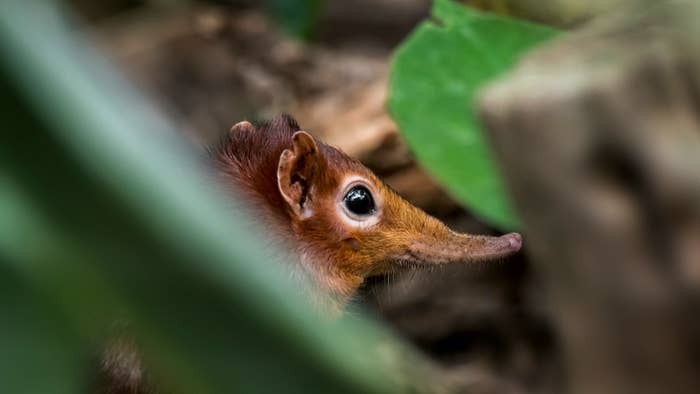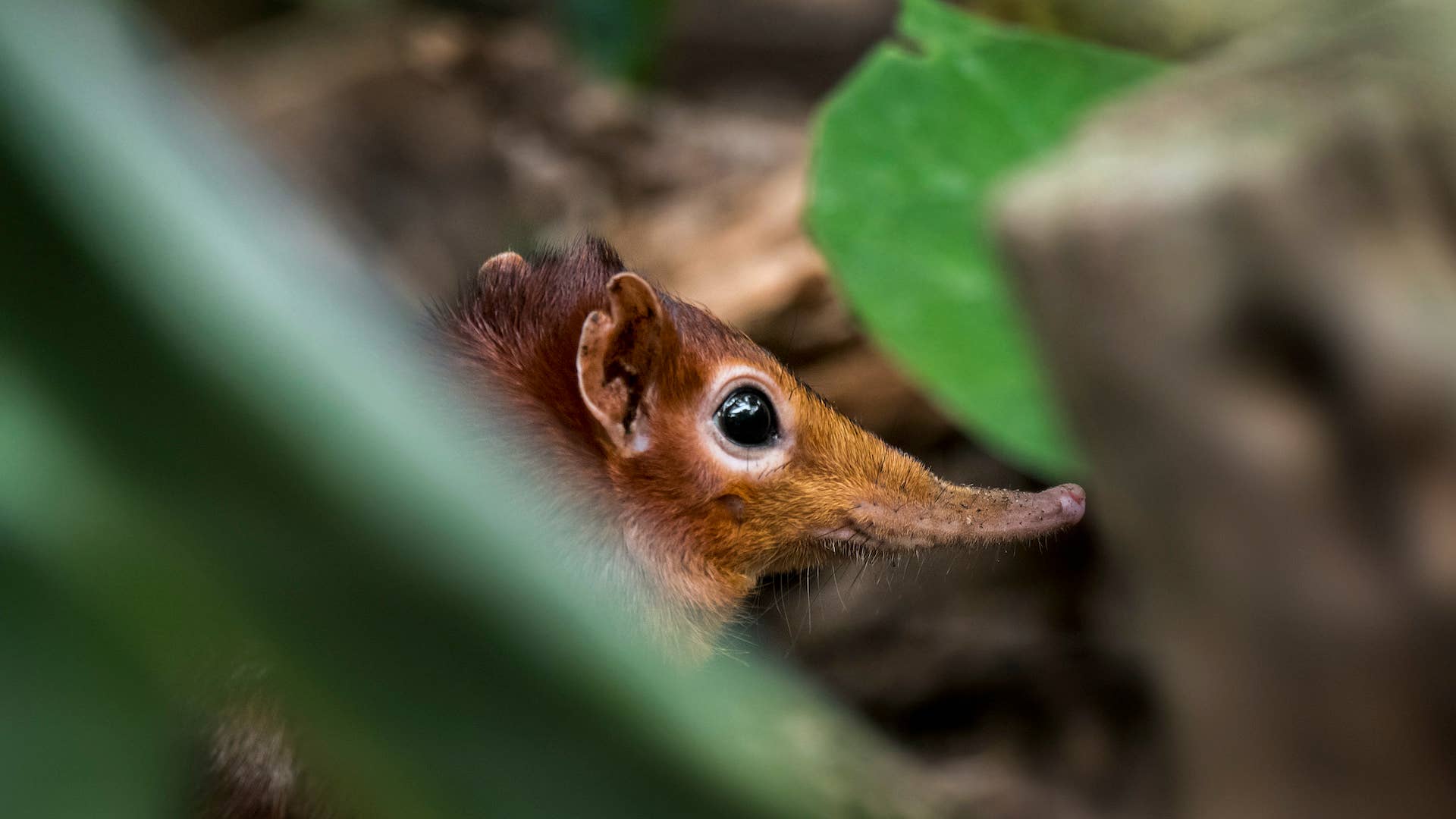
It’s been 50 years since scientists have seen a tiny, mouse-sized elephant shrew recently rediscovered in the Horn of Africa.
The species is known as the Somali sengi and looks like a very small ant-eater with its trunk-like nose. It’s a talented little fella, who can race around at 20 mph despite its teeny size. According to the Guardian, the last time it had been seen and documented was 1968.
So what has it been doing all this time? Well it looks like they moved. In 2019, scientists decided to head to neighboring Djibouti where locals could identify the creature based on old photographs, saying they had seen that little guy around.
In order to confirm the sightings, the team of scientists set 1000 traps in locations that seemed likely to host the shrews, based on their need for shelter from birds of prey in the dry, rocky landscape. The traps were made of a concoction of peanut butter, oatmeal, and yeast, which worked as they caught sight of 12 of the shrews, distinguishable by the tuft of fur on their tails.
“It was amazing,” Steven Heritage, a research scientist at Duke University in the US, told the Guardian. “When we opened the first trap and saw the little tuft of hair on the tip of its tail, we just looked at one another and couldn’t believe it. A number of small mammal surveys since the 1970s did not find the Somali sengi in Djibouti – it was serendipitous that it happened so quickly for us.”
The Somali sengi was previously listed as the fifth most wanted animal on Global Wildlife Conservation’s 25 “most wanted” list of creatures to be rediscovered. “This wonderful sengi rediscovery fills us with renewed hope for the remaining small mammal species on our most wanted list, such as the De Winton’s golden mole and the Ilin Island cloudrunner,” said GWC’s Robin Moore.
Not only are these sengis not extinct, but they seem to be doing pretty well. Houssein Rayaleh, a Djiboutian research ecologist and conservationist, joined the trip believing he had seen the animal before.
“For us living in Djibouti, we never considered the sengis to be ‘lost,' but this new research does bring the Somali sengi back into the scientific community, which we value,” Rayaleh said. “For Djibouti this highlights the great biodiversity of the country and shows that there are opportunities for new science and research here.”

